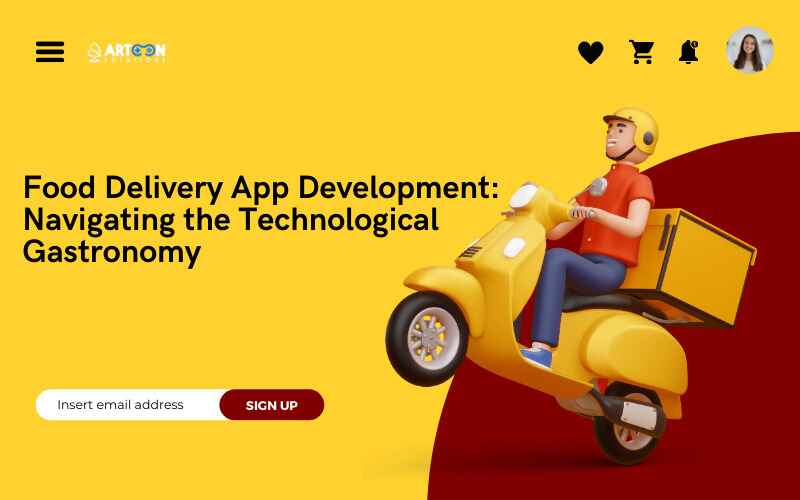The Indian food delivery landscape has undergone a transformative journey, propelled by the surge in technology and changing consumer behaviors. In this article, we delve into the intricate world of food delivery app development, exploring the key players, technologies, challenges, and future trends that shape this dynamic industry.
Read More Informative Blogs on Informative Junction
Introduction
The Evolution of Food Delivery Apps
The genesis of food delivery can be traced back to the humble beginnings of telephone orders. However, with the advent of mobile technology, the landscape witnessed a paradigm shift. The rise of smartphones and high-speed internet paved the way for the development of dedicated food delivery apps.
Significance of App Development in the Food Industry
As the food delivery market becomes increasingly competitive, the role of app developers becomes pivotal. Crafting intuitive and feature-rich applications is not merely a technical challenge but a strategic necessity for businesses aiming to stay ahead in the race.
The Landscape of Food Delivery in India
Overview of the Food Delivery Market
India, with its diverse culinary traditions, presents a unique challenge and opportunity for food delivery services. A comprehensive understanding of the market dynamics is essential for developers to create apps that resonate with the local populace.
Competitive Analysis of Existing Apps
Dominant Players
In this fiercely contested arena, certain apps have emerged as dominant players, capturing the lion’s share of the market. Analyzing their success provides valuable insights for aspiring developers.
Emerging Competitors
The market is not static, with new entrants constantly challenging established norms. Identifying emerging competitors and understanding their strategies is crucial for staying adaptive.
The Role of App Developers
Crafting User-Friendly Interfaces
User experience is paramount to the success of any app. Developers must focus on creating interfaces that are not only visually appealing but also intuitively navigable.
Integration of Advanced Features
Real-Time Tracking
Implementing real-time tracking enhances the user experience by providing transparency in the delivery process. It requires a seamless integration of GPS technology.
Personalized Recommendations
In an era of personalization, apps that can offer tailored recommendations based on user preferences gain a significant edge. This involves leveraging advanced algorithms and machine learning.
Key Technologies in Food Delivery App Development
GPS Technology for Location Services
Precise location tracking is the backbone of efficient food delivery. Integration of GPS technology ensures accurate order tracking and timely deliveries.
Payment Gateway Integration
Secure Transactions
Security is paramount in financial transactions. Developers must implement robust encryption and authentication measures to ensure secure payment gateways.
Multiple Payment Options
To cater to a diverse user base, apps should offer multiple payment options, including digital wallets, credit/debit cards, and net banking.
Challenges in Food Delivery App Development
Addressing Security Concerns
The sensitive nature of user data and financial transactions makes security a persistent challenge. Developers must stay abreast of the latest security protocols to safeguard user information.
Managing Peak Order Times
Scalability Solutions
During peak hours, apps experience a surge in orders. Scalability solutions, such as cloud computing, are essential to ensure seamless service even during high-demand periods.
Load Balancing Strategies
Efficient load balancing distributes incoming orders evenly, preventing server overloads and ensuring optimal performance.
The Impact of COVID-19 on Food Delivery Apps
Changes in Consumer Behavior
The global pandemic reshaped consumer behavior, with an increased reliance on food delivery services. Developers had to adapt swiftly to meet the changing demands of a socially distanced world.
Technological Adaptations during the Pandemic
Contactless deliveries, AI-driven safety measures, and enhanced hygiene features became integral parts of food delivery apps, reflecting the industry’s responsiveness to the crisis.
Case Studies
Successful Food Delivery Apps in India
User Base Expansion Strategies
Examining the strategies employed by successful apps in expanding their user base provides valuable insights for developers looking to replicate or innovate.
Technological Innovations
Innovation is the lifeblood of the tech industry. Case studies on technological advancements shed light on what’s possible and what lies ahead.
Regulatory Compliance
Navigating Legal Requirements
The regulatory landscape for food delivery apps involves compliance with various laws related to food safety, data protection, and business operations. Developers must navigate these intricacies to avoid legal pitfalls.
Data Protection and Privacy Concerns
The collection and use of user data bring forth privacy concerns. Developers must implement robust data protection measures to instill trust among users.
Future Trends in Food Delivery App Development
Artificial Intelligence in Personalization
The integration of AI allows for more sophisticated personalization, from recommending dishes to predicting delivery times based on historical data.
Drone and Autonomous Vehicle Delivery
The future might see a shift towards automated delivery through drones and autonomous vehicles, revolutionizing the last-mile logistics of food delivery.
Cost Considerations in App Development
Budgeting for a Food Delivery App
Developing a comprehensive budget that encompasses all aspects of app development, from coding to marketing, is vital for financial planning.
Return on Investment Analysis
A thorough analysis of the return on investment helps businesses gauge the success and viability of their app development endeavors.
Marketing and Branding Strategies
Creating a Distinctive Brand Identity
In a saturated market, a strong brand identity is a differentiator. Developers must collaborate with marketers to create compelling branding strategies.
Digital Marketing Tactics for App Promotion
Utilizing digital marketing channels, such as social media and targeted advertising, is essential for app promotion and user acquisition.
User Feedback and Continuous Improvement
Importance of User Reviews
User feedback provides invaluable insights into app performance and user satisfaction. Developers must actively seek and respond to user reviews for continuous improvement.
Iterative Development for Ongoing Enhancement
The tech industry evolves rapidly. Adopting an iterative development approach allows developers to stay ahead of the curve by implementing regular updates and enhancements.
Collaboration with Restaurants
Building Strong Partnerships
Successful food delivery apps foster strong partnerships with restaurants. This involves clear communication, mutual benefit, and streamlined processes.
Streamlining Order Processing
Efficient order processing is a collaborative effort between developers and restaurant partners. Seamless integration ensures timely and accurate order fulfillment.
Sustainable Practices in Food Delivery
Eco-Friendly Packaging Solutions
Environmental sustainability is gaining prominence. Developers should explore and implement eco-friendly packaging solutions to minimize the environmental impact.
Reducing Carbon Footprint in Delivery Operations
Optimizing delivery routes, exploring electric vehicle options, and adopting sustainable practices contribute to reducing the carbon footprint of food delivery operations.
International Expansion Opportunities
Challenges and Opportunities in Global Markets
Expanding beyond domestic borders presents both challenges and opportunities. Developers must adapt their apps to diverse cultural preferences and regulatory environments.
Adapting to Diverse Cultural Preferences
Understanding cultural nuances is essential for international success. Adapting app features and marketing strategies to resonate with diverse audiences is a key consideration.
Ensuring Accessibility for All Users
Inclusive Design Principles
App developers should prioritize inclusive design, ensuring that the app is accessible to users with disabilities. This involves considerations for visual, auditory, and motor impairments.
Addressing Accessibility Challenges
Identifying and overcoming accessibility challenges requires a proactive approach involving user testing and continuous refinement of accessibility features.
Security Measures in App Transactions
SSL Encryption for Data Security
Secure Sockets Layer (SSL) encryption is non-negotiable in ensuring the confidentiality and integrity of data transmitted during transactions.
Two-Factor Authentication Implementation
Adding an extra layer of security through two-factor authentication enhances user account protection, safeguarding against unauthorized access.
Conclusion
Recapitulation of Key Points
In this comprehensive exploration of food delivery app development in India, we’ve covered the evolution of the industry, the role of developers, key technologies, challenges, and future trends.
The Future Landscape of Food Delivery Apps in India
As technology continues to evolve and consumer expectations rise, the future promises exciting advancements in food delivery apps. Developers must stay agile, adapting to new technologies and consumer preferences to remain at the forefront of this dynamic industry.




